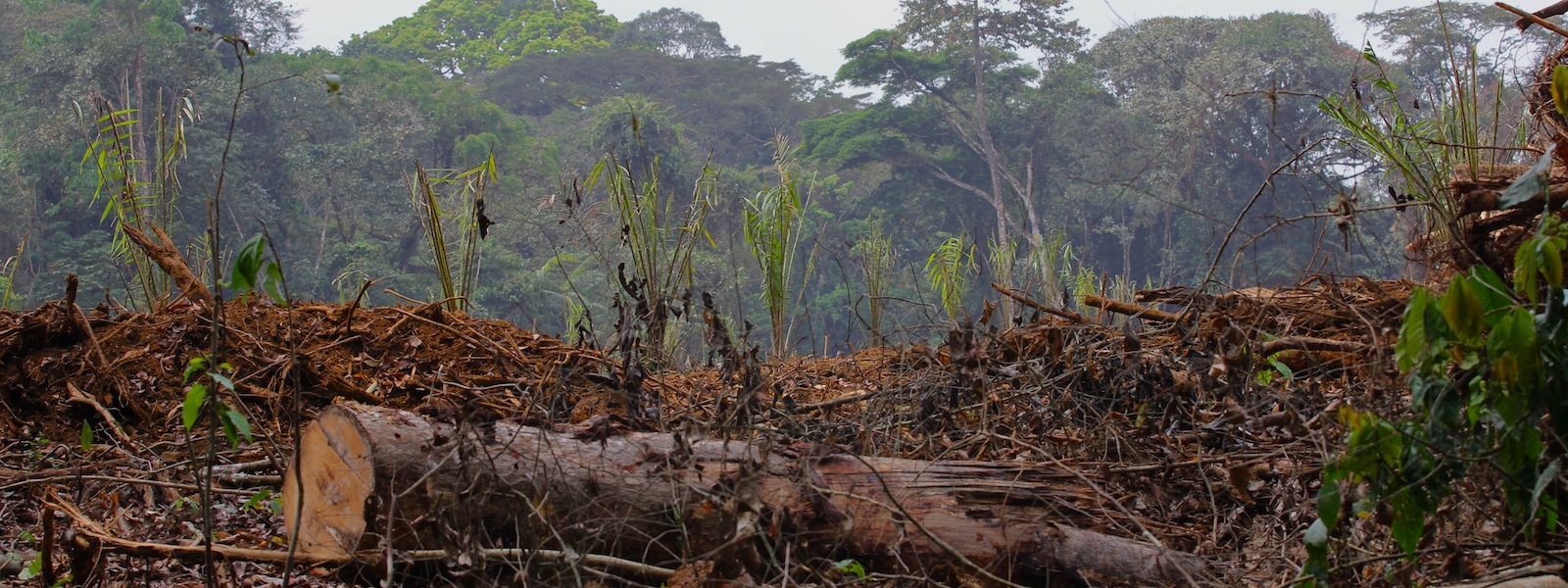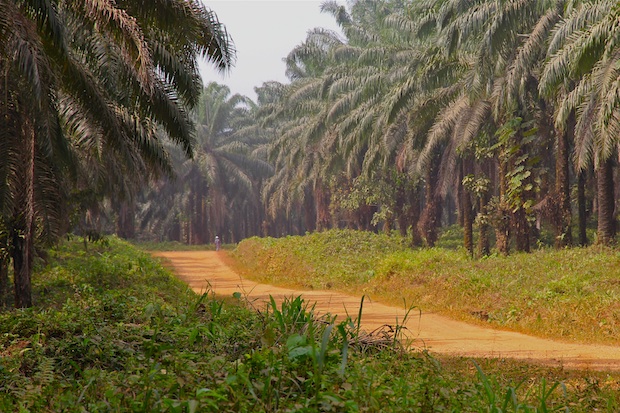Palm oil, from the fruit of the oil palm tree (Elaeis guineensis), is the world’s most widely used edible oil. Although the oil palm is native to west and central Africa and is widely cultivated in the region, most of the palm oil produced for the global market comes from the vast industrial plantations of Malaysia and Indonesia.
Growing demand for palm oil and rising production costs in Asia have led to a new land rush across the Congo Basin. Today palm oil is coming full circle, “returning” to its ancestral home: The mega-plantations are arriving in Africa, threatening both the environment and the livelihoods of countless smallholder palm growers and farmers.
According to a recent study published by the Rainforest Foundation (U.K.): “New industrial oil palm expansion projects currently underway cover 0.5 million hectares in the Congo Basin, which will result in a fivefold increase in the area of active large-scale palm plantations in the region. The area of projects announced since 2009, but not necessarily underway, covers 1.6 million hectares and palm oil companies are searching for larger areas. Approximately two-thirds of the total forest area of the Congo Basin’s forests – 115 million hectares – has suitable soil and climate for growing oil palms.”
Environmentalists and social justice activists fear the development of massive, industrial palm oil plantations in the Congo Basin, home to the world’s second largest tropical rainforest and a number of notoriously corrupt governments. Palm oil production has wreaked havoc in Indonesia and Malaysia, leading to massive deforestation, critical loss of biodiversity and violent social conflicts. Will the same occur here?

